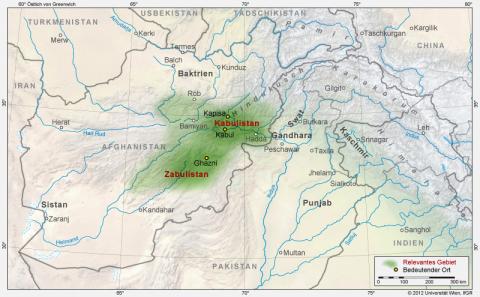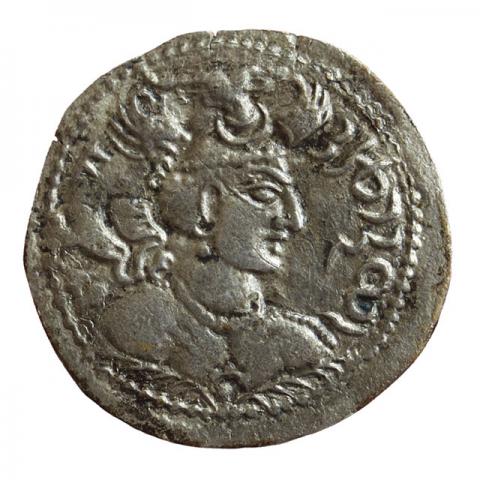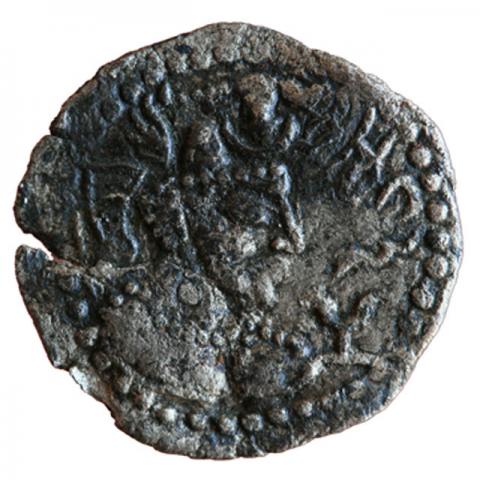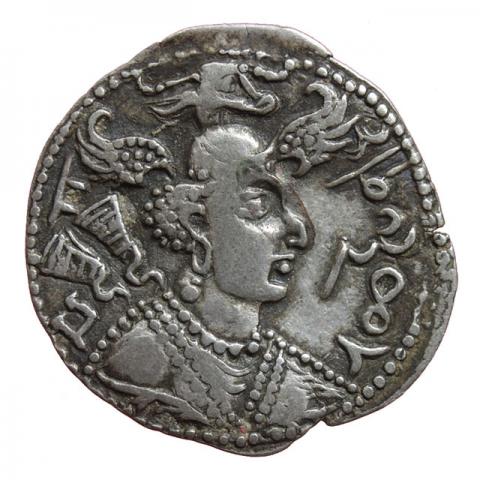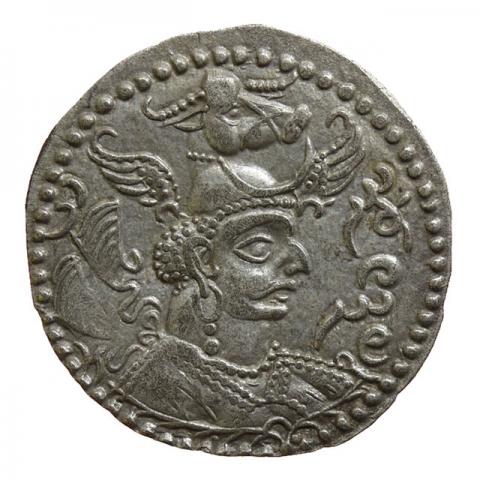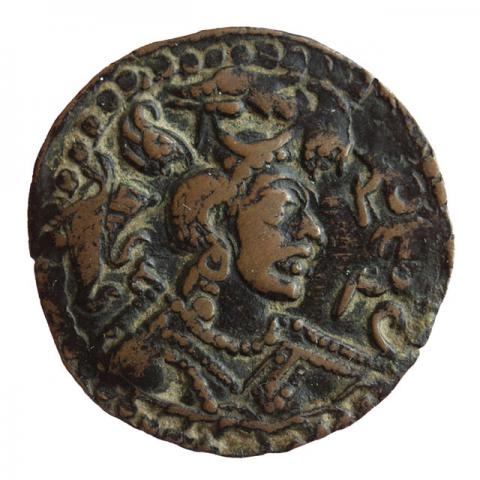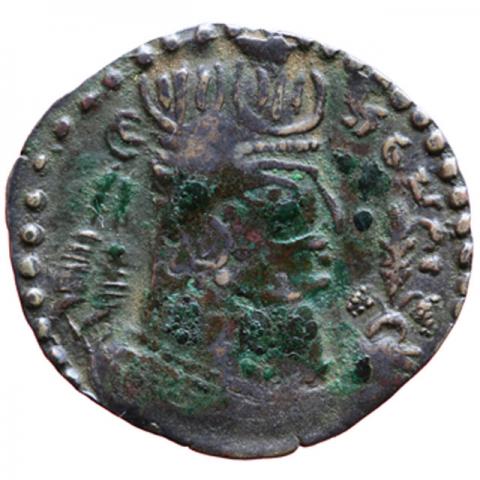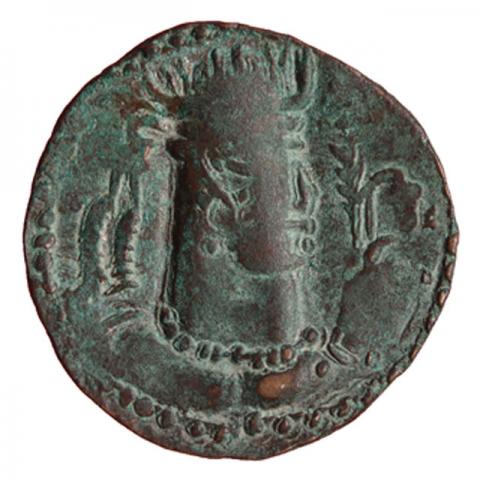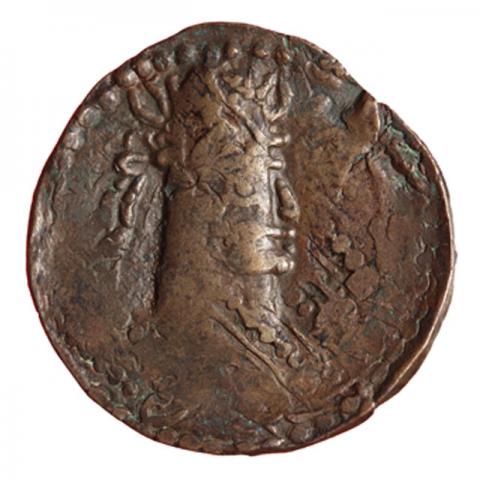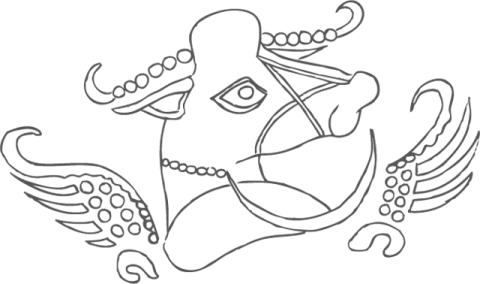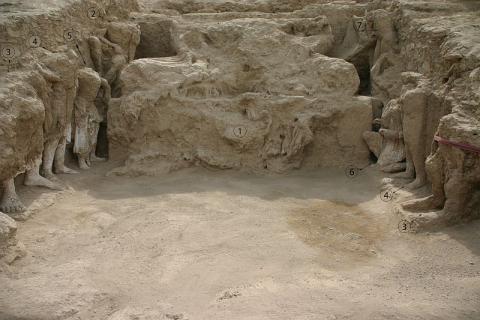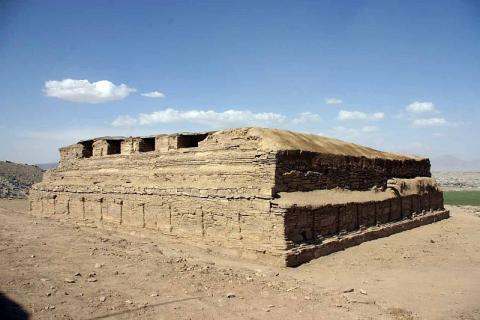According to the numismatic evidence, the Sasanians lost more than just Bactria to the Hephthalites following Peroz's defeat in 484 CE; they had to give up Zabulistan (South Afghanistan) to the Nezak kings, who supposedly opened a mint in Ghazni (Nos. 1–4).
The background of the Nezak is obscure. Their name is only known from coins with the title "King of Nezak" written in Sasanian Middle Persian (Pehlevi). A connection with the Alkhan cannot entirely be ruled out, specifically through the progenitor of the dynasty, who according to a Chinese source of the Tang period (7th century CE) was supposed to be a certain Khingal, possibly the Alkhan king Khingila (around 430/40–495 CE) (showcase 7).
The last king of this Khingal dynasty, which held the throne of Kapisi (Kabulistan) for twelve generations and is supposedly connected to the Nezak of the coins, was a certain Ghar-ilchi, who still in 661 CE was confirmed as king by the Chinese emperor. Afterward, however, he was forced from the throne by the Turk Shahis (showcase 12).
The extraordinary characteristic of the Nezak coins, which fundamentally follow the Sasanian model and integrate some elements of the neighboring Alkhan kings, is the winged bull's head crown. In the first quarter of the 6th century the Nezak succeeded in taking over Kabulistan (Kapisi) and started to struck their coins in a second mint in Kapisa (near Bagram, 80 km north of Kabul) (No. 5).
The golden bull's head crown of the king of Kapisi received special mention in Chinese sources going back to the late 6th or early 7th century, and the bull's head crown used as a royal insignia is recorded on coins of the region well into the 8th century (showcase 14).


